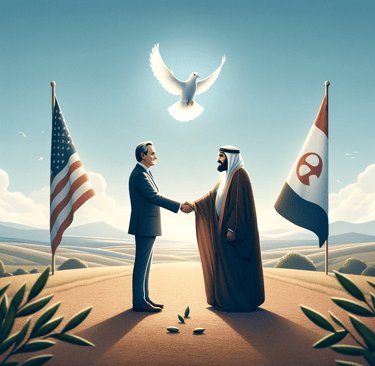The Illusion of Peace: Why Truces Between Warring Nations Often Fall Short
Explore the complex reality behind why truces between warring nations often turn out to be ineffective and mere political theatre, failing to establish lasting peace.
Faheem Hassan
11/23/20232 min read


Read my article about Your Pathway to Financial Independence and a Stress-Free Retirement
In the intricate landscape of international relations, truces between warring nations are often celebrated as steps towards peace. However, beneath the surface, these agreements can be ineffective, serving more as political theatre than as sustainable solutions to deep-rooted conflicts. This article examines the reasons behind the ineffectiveness of many truces and the challenges in transforming them into lasting peace.
The Fragility of Truces
Truces are typically temporary halts to hostilities, designed to provide a breathing space for negotiation. However, their temporary nature also makes them fragile. Without addressing the underlying causes of conflict, these ceasefires can collapse, leading to the resumption of hostilities.
Lack of Trust and Verification
A significant challenge in maintaining a truce is the lack of trust between conflicting parties. Without robust mechanisms for verification and enforcement, there's always a risk that one side may violate the terms, leading to the breakdown of the truce.
Political Theatre
Often, truces are used by nations as a tool for political theatre – to appear conciliatory or to buy time to re-strategize. They might be used to appease international pressure without any real commitment to resolving the underlying issues.
External Influences and Interests
International politics and the interests of external parties can also undermine truces. Foreign nations might support different sides of a conflict for their geopolitical or economic interests, complicating the path to lasting peace.
Humanitarian Crisis Continuation
Even during truces, underlying humanitarian crises often continue. Without active conflict, the urgency to address these issues diminishes, leaving civilians in a state of prolonged suffering and instability.
The Challenge of Reconciliation
Achieving true peace requires reconciliation, which is often overlooked in truce agreements. Reconciliation involves addressing grievances, transitional justice, and building mutual understanding – processes that are complex and time-consuming.
Economic and Social Disruptions
Truces do not immediately resolve the economic and social disruptions caused by war. The damage done to infrastructure and communities often continues to affect the lives of people, and without comprehensive peace plans, these issues remain unaddressed.
Conclusion
While truces between warring nations are steps towards ending violence, they are often ineffective in establishing lasting peace. The challenges of trust, external influences, and the need for comprehensive reconciliation and rebuilding efforts make the journey from truce to peace a complex and uncertain one. It is crucial for the international community to recognize these limitations and work towards sustainable solutions that address the root causes of conflicts.
